Turtles on Curacao:
The Do's & Don'ts
Sea turtles are roaming the earth for about 150 million years now. To put that in context, dinosaurs became extinct 65 million years ago. But we humans make it really hard for these loveable sea creatures to survive even longer. Nearly all species of the sea turtle are classified as endangered. How can we help the turtles on Curacao and in the rest of the world?
The Hawksbill turtle, which is often found around Curacao, is listed as critically endangered. Other species that are common and at risk around Curacao are the Green- and Loggerhead turtle. Their numbers are shrinking, and it is really a shame. We, The Dive Division Team, can’t and don’t want to imagine a world without these friendly reptiles!
We need to come in action, and make a difference together! To guide you, here are to do’s and don’ts to help these precious turtles.
1. Don’t Feed The Turtles
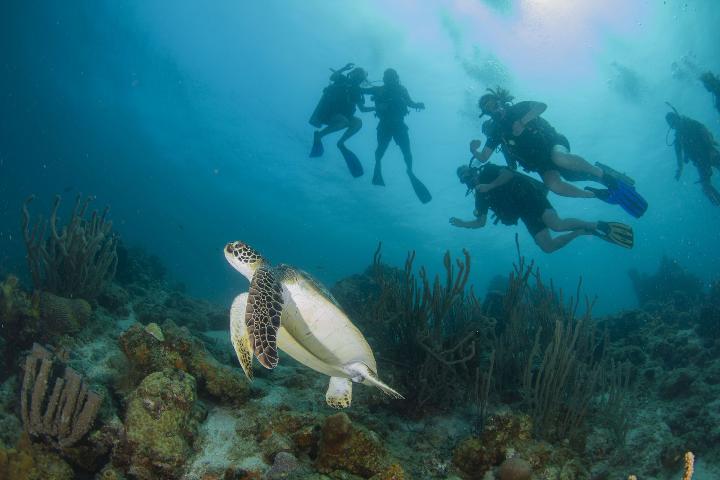
You might think feeding turtles is harmless or it might feel like you are helping, but it is actually really dangerous for them. Overfed turtles are at risk for a variety of health conditions such as liver disease or cardiovascular issues. Moreover, occasionally fed turtles are at a higher risk of boat strikes and injury because they learn that humans are a source of tasty snacks and are more likely to attempt to approach boats.
Let the turtles find their own food, it’s their instinct. Plus, watching marine turtles feed in their natural habitat is so much more fun!
2. Don’t Touch The Turtles
Aside from it just not being polite, it is also illegal to touch a sea turtle under the protection of the Endangered Species Act. Under this act, any endangered species is protected against touching, riding, pursuing, harming, or otherwise altering a turtle’s behavior, and any violation of this act can result in a hefty fine. In the same way that you wouldn’t want a random snorkeler to swim by and touch you, keep your distance from the turtles.
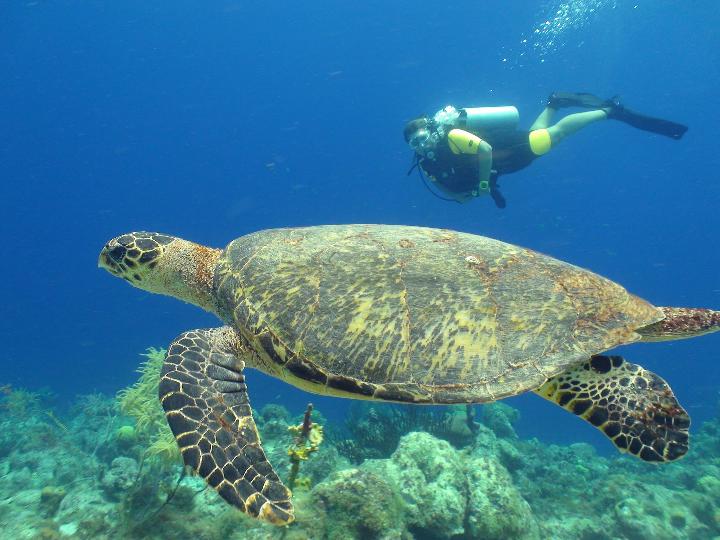
Meet our house reef turtle ‘Bella’ in her natural habitat. Book a guided dive with us to get a chance to swim next to her at appropriate distance. Or maybe snorkel above her, we have snorkel gear for rent!
3. Don’t Contribute To Marine debris
Marine debris is the rubbish of our day every life. It travels over land, down the streams, rivers and via storms to the ocean. Plastic bags, plastic water bottles, cigarette buds and tin cans. These are just a few examples of the things we find underwater. Globally annual plastic production has boomed from 1.7 million tons in 1950 to almost 300 million tons nowadays. As much as 70% of marine litter has been estimated to end up on the seabed. All seven sea turtle species, over half marine mammal species and almost two thirds of all seabird species have ingested or become entangled in marine debris. Entanglement is a huge danger for turtles. For example, fishing lines or plastic rings may cause a turtle to be unable to swim to the surface to breath and thus it will drown. Also, they feed on jellyfish, for a turtle it is hard to see the difference between a plastic bag and a jellyfish. If a mistake is made, the turtle’s life is in danger!
Can you tell the difference?
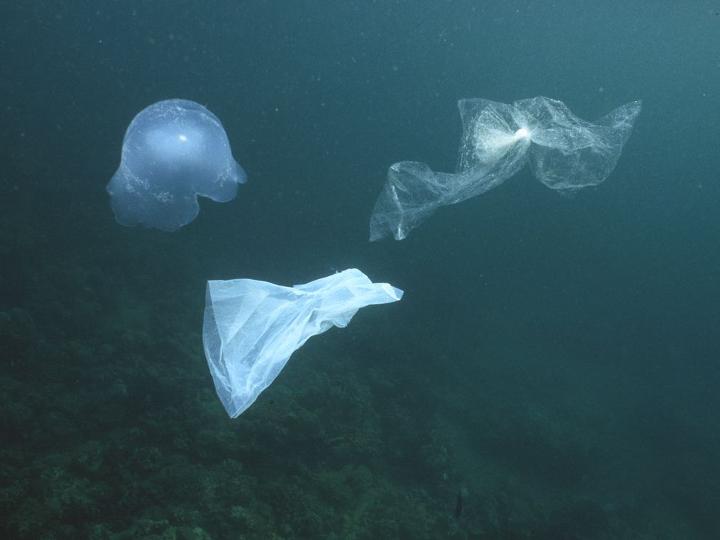
So, don’t contribute to marine debris. Avoid single-use plastic. Don’t throw trash on the ground. Don’t abandon any fishing gear.
4. Do Clean-Up Dives Or Join Beach Clean-Ups
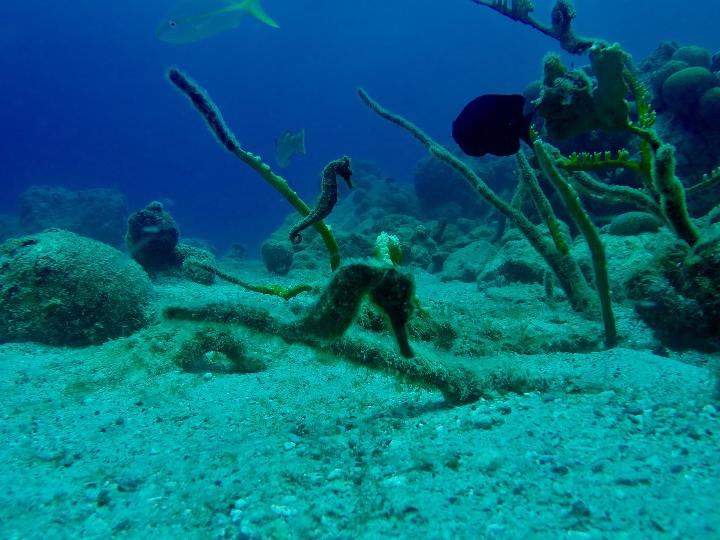
All Dive Division Members such as, Blue Bay dive & watersports are part of the Dive Task Force Curacao, a collaboration of dive centers who organize monthly clean-ups. Join our Project AWARE Dive Against Debris clean-up dive at our adopted house reefs. Like our Facebook page to keep yourself informed about the cleanup dives and other events!
Make a difference by taking Marine debris out of the water and trash off the beaches. Data of the debris which is collected is reported to Project Aware. Project Aware is putting debris data from all over the world into a geographical context. Project Aware are organizing a lot of events to spread awareness and to take care of the oceans. Check out their map of debris here!
5. Do-nate!
Another way to make a difference is to help organizations protecting the turtles and all marine life. With your help, organizations like Project AWARE and Sea Turtle Conservation Curacao, are able to do more! One of the goals from Sea Turtle Conservation Curacao is to reach and create awareness around the globe. To reach as many people as possible is a big challenge for conservation organizations. Help by making a donation to Project Aware via this link, or to Turtle Conservation Curacao via this link! Or share and like the turtle-song and videoclip that Turtle Conservation Curacao created to image the problem and solutions to the world.
6. Do enjoy the turtles
Watching turtles gracefully cruise past you is a wonderful thing! We can’t get enough of it! Just make sure you keep an appropriate distance and you will see that the turtle is not bothered by your presence. Especially Bella, our house reef turtle, is really photogenic and not shy! Meet the turtles of Curacao, book a guided dive with us! Or, join us on our Blue C luxury catamaran. Sail along the coast of Curacao and snorkel with multiple turtles at a time during the West Coast trip.
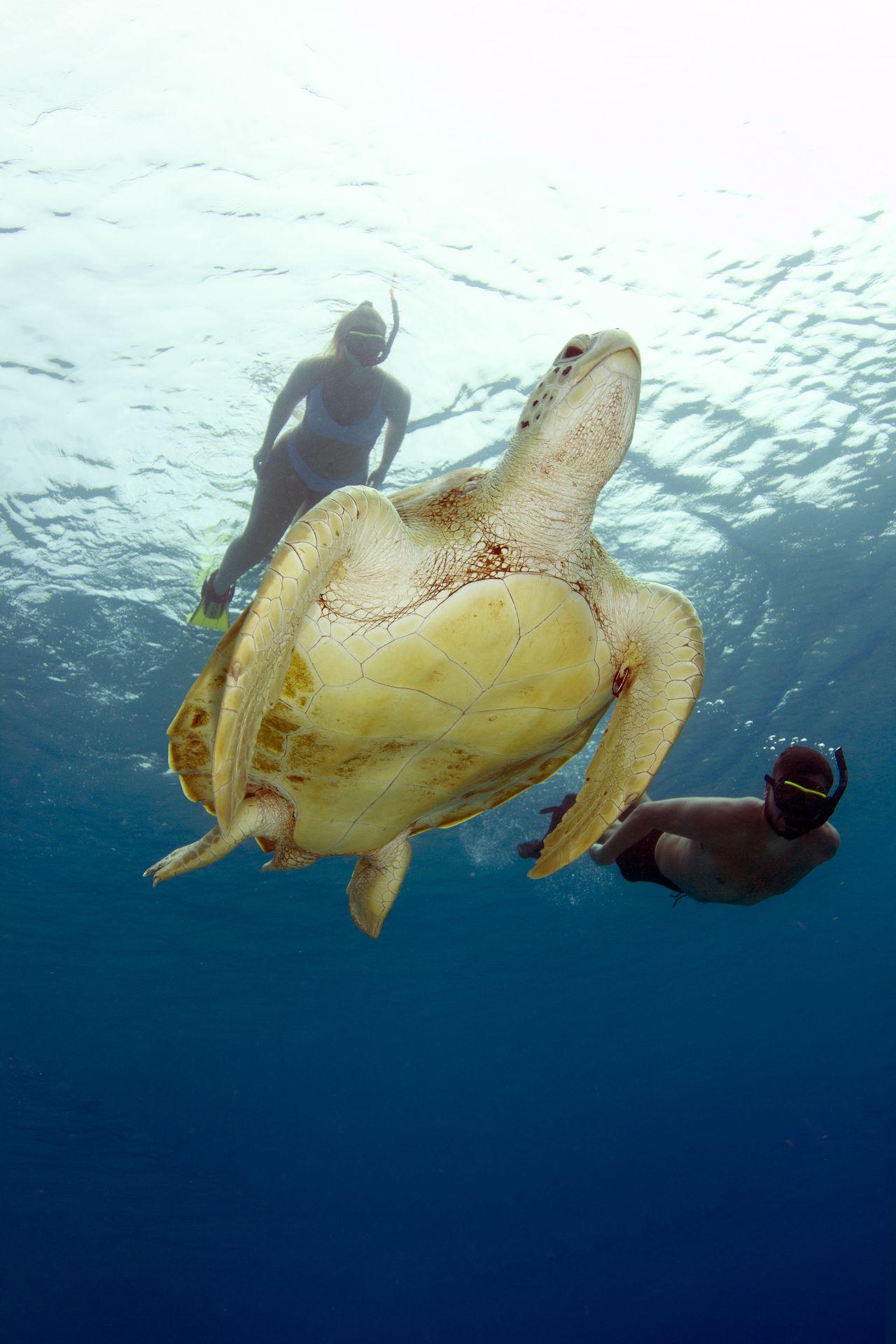
To conclude...
Good environmental habits can make a difference. Don’t touch or feed the turtles, don’t litter and avoid single-use plastic. BE A HERO, join our cleanups and donate! Something really important, enjoy every minute of watching these beautiful and historic turtles swim around you! Thank you so much!
Greetings from the Dive Division Team and Bella, our house reef turtle at Blue Bay Beach!
